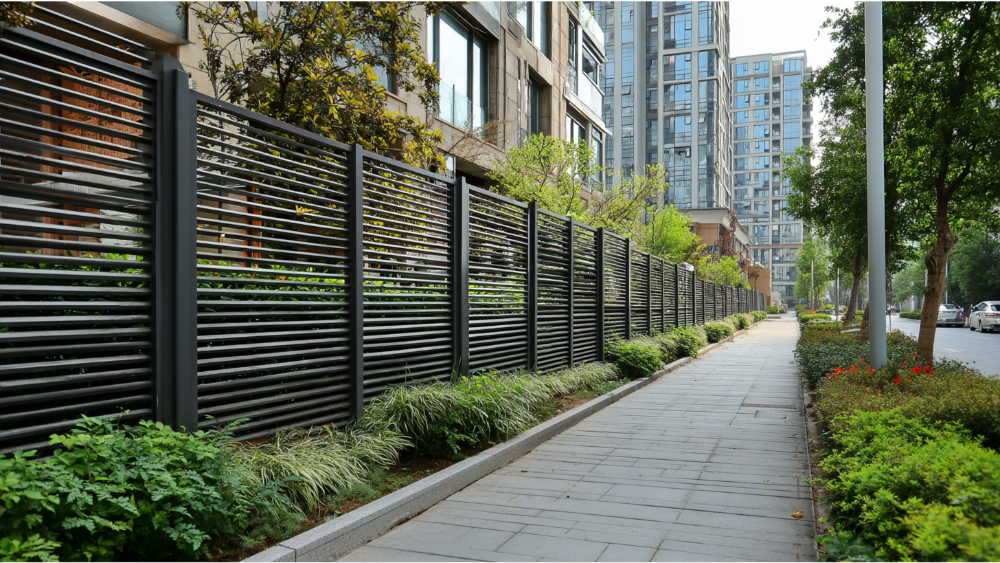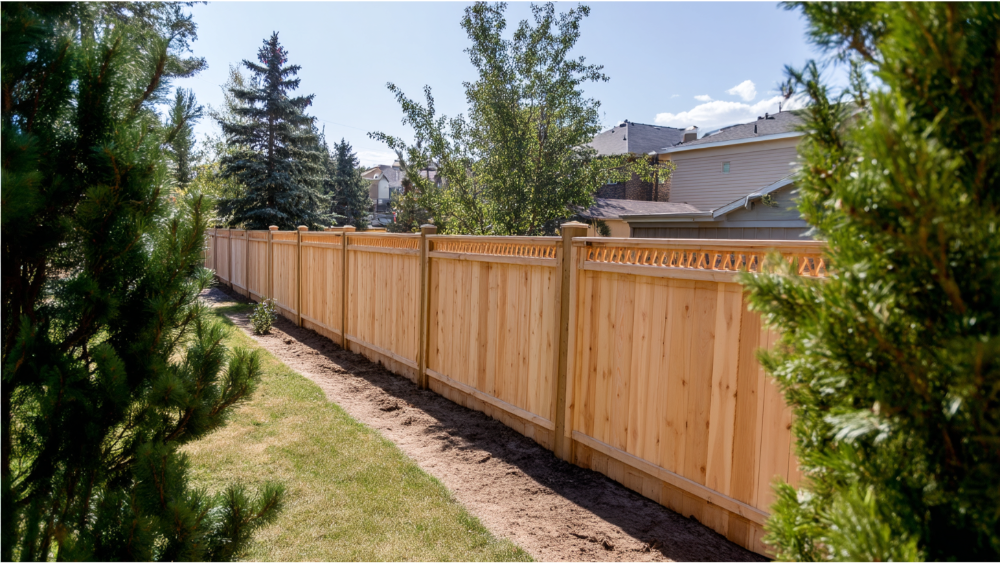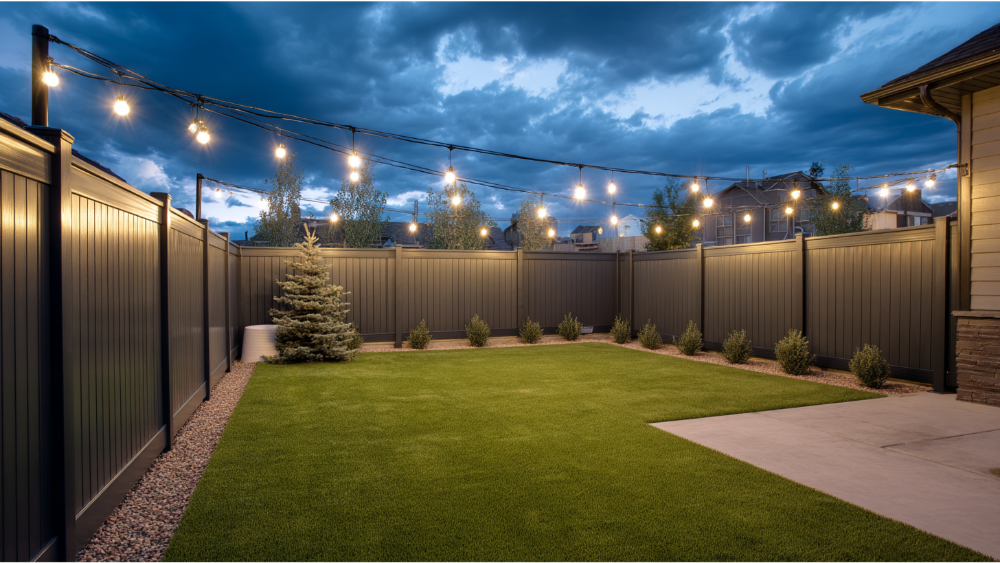When you’re ready to install a fence on your property or around your house, one of the first questions that comes up is, do I need a permit to build a fence? It might sound like a simple yes or no question, but the reality is that permit requirements vary depending on your location, fence height, materials, and even your proximity to a property line or a public right-of-way. Navigating local zoning laws and securing the proper building permit can be confusing, but understanding the rules upfront and the specific requirements in your area is key to avoiding costly fines, project delays, or legal action down the road.
At Inline Security Fence, we help homeowners handle every step of the fence installation process, from choosing materials and designs that enhance your yard’s aesthetic appeal to working with your local building department to ensure compliance with all regulations. This guide will walk you through everything you need to know about whether you need a permit to build a fence in 2025, and how to make sure your project runs smoothly.
When Do You Need a Fence Permit?

In many jurisdictions, you need a permit to install a fence under specific conditions. Permit requirements can be different depending on your city or county, but there are common scenarios that typically require approval from your local government.
Common Permit Triggers
- The fence exceeds a certain height (usually 6 feet for backyard fences or 3 to 4 feet in the front yard)
- The proposed fence is located near a property line, corner lot, sidewalk, or public right-of-way
- You are building with materials like concrete, stone, or installing a retaining wall
- The fence is being built in an area with unique local zoning laws or other areas with special restrictions
- The project is in a neighborhood with an active HOA that has its own rules
In short, if your new fence has the potential to affect neighbors, visibility, safety, or shared property, you likely need a permit. It’s also important that any person involved in the project understands and follows these specific requirements to avoid issues.
Why Cities Require Fence Permits
Fence permits serve an important role in maintaining safety, property boundaries, and neighborhood standards. By going through the correct permitting process, you help ensure compliance with both city and HOA rules, and reduce the chance of legal disputes.
Your local building department will evaluate your fence project based on:
- Structural safety and wind resistance
- Height restrictions and visibility (especially on a corner lot)
- Use of approved materials
- Property line accuracy
- Impact on drainage or retaining walls
- Distance from utilities or easements
In many cases, getting a permit also triggers an inspection, which helps confirm the fence was installed correctly and within the scope of local regulations. Additionally, the presence of a permit sign on the property often indicates that the project has been approved and is compliant.
What Happens If You Don’t Get a Permit?

Failure to obtain a required building permit before fence construction can lead to serious consequences, even if the fence itself appears to be well-built.
Risks of Skipping the Permit
- Stop work order: Your local government can halt your project until proper approvals are obtained
- Fines: You may be subject to daily penalties until the fence is removed or brought into compliance
- Tear-down orders: If your fence violates local regulations, you may be required to remove or modify it at your own cost
- Legal action: Neighbors can file complaints that result in hearings, fees, or property line disputes
The best way to avoid these risks is to determine early whether you need a permit to install a fence and take the proper steps to comply with all applicable building codes.
Understanding Local Zoning Laws and Building Codes
Local zoning laws and building codes dictate the types of structures that can be built in residential areas, including fences. These rules are designed to manage land use, aesthetics, and safety.
Most local regulations are available online through your city or county’s website, or you can call your local building department for clarification. If you’re in an HOA, you should also review their bylaws, as they may set additional limits on materials, style, or height.
Zoning and Building Factors That May Affect Your Fence Permit
- Whether the fence is in a front yard, backyard, or on a corner lot
- If the fence will include a retaining wall or be constructed with stone or concrete
- If the fence is being built in a rural area with fewer restrictions or in other areas with more stringent rules
- The purpose of the fence (privacy fences vs. security or decorative)
- The location of underground utilities or easements
If you’re unsure how to interpret your local zoning laws or building code, it’s a smart idea to work with a professional fence installation company that understands the process and can help ensure compliance.
Fence Height Restrictions and Material Guidelines

Most cities allow backyard fences up to 6 feet tall without special permission, and front yard fences up to 3 or 4 feet. Anything taller typically requires a building permit.
Common Height and Material Limits
- Backyard fences: Up to 6 feet without a permit in many codes
- Front yard fences: Often limited to 3–4 feet to maintain visibility
- Retaining walls: May require additional engineering or permitting
- Stone, concrete, or masonry: Typically require a permit regardless of height
- Privacy fences: Must still meet visibility and location regulations
Always measure carefully and verify the rules with your local building department before starting construction.
What’s Required to Apply for a Fence Permit?
To get a fence permit, you will need to submit several forms and documents to your local government or building department. Requirements can vary depending on your jurisdiction, but most applications include the following:
Typical Fence Permit Application Requirements
- Site plan showing the proposed fence in relation to the property line
- Description of materials (wood, vinyl, chain link, etc.)
- Height and design details of the fence
- Location details, including distances from streets, sidewalks, and other structures
- Written HOA approval if applicable
- Permit fees, which can range from $25 to over $500 depending on your location and the size of your project
The more detailed and accurate your application, the faster it can be reviewed and approved.
How Long Does It Take to Get a Fence Permit?

The timeline to get a fence permit can vary depending on your city’s workload, the complexity of your project, and whether your proposed fence meets all the local regulations.
Average Approval Timeline
- Simple residential fences: 1–2 weeks for review and approval
- Fences requiring variance or special consideration: 3–6 weeks
- Projects with incomplete applications: Delays due to missing forms or inaccurate information
Plan ahead and submit early to avoid delaying your fence installation.
What If You Live in a Rural Area?
If your home is in a rural area, you might assume that permits are not required, but that’s not always the case. While some counties have relaxed rules for agricultural or low-density zones, others still require a fence permit to ensure safety and proper land use.
It’s always best to check directly with your local building department to determine whether your project is exempt from permitting requirements.
Fence Installation and HOA Rules
In many neighborhoods, homeowners associations (HOAs) have their own rules in addition to city or county regulations. These HOA rules can be more restrictive and may limit fence height, color, style, and materials.
HOA Compliance Tips
- Always request a copy of the fence rules before submitting a permit application
- Submit your design for HOA approval even if your city has already approved it
- Ensure that your fence location does not cross onto shared property lines
If you install a fence without HOA approval, you may be required to remove it, even if it meets all city code.
How to Ensure Compliance With All Regulations
Navigating permit requirements and local regulations can feel overwhelming, especially when you’re managing a large home improvement project. That’s where we come in.
At Inline Security Fence, we handle the entire process for you. From obtaining the correct building permit to final inspection, we make sure your fence installation meets all legal and structural requirements.
Our Process
- Site assessment to determine your property boundaries and any unique challenges
- Permit application and submission to your local building department
- Fence installation using approved materials and techniques
- Inspection coordination, if required by your jurisdiction
- Final walkthrough to verify quality, safety, and compliance
When you work with us, you never have to worry about missing forms, denied permits, or stop work orders. We take care of everything.
Frequently Asked Do I Need a Permit to Build a Fence Questions
Do I need a permit to build a fence on my property?
In many jurisdictions, yes. You’ll likely need a permit if your fence exceeds height restrictions, is near a public right-of-way, or is made of certain materials.
How much does a fence permit cost?
Fence permit fees vary depending on your city, the size of the project, and any additional review or inspection needs. Fees typically range from $25 to $500.
Can I build a fence directly on the property line?
You can, but you may need to coordinate with your neighbor and provide a site plan. Some cities require fences to be built a few inches inside your property line.
What happens if I ignore the permit rules?
You may face a stop work order, be fined by your local government, or be forced to remove the fence. Legal action and property disputes are also possible.
Who handles fence permits?
Your local building department manages the fence permitting process. A professional fence contractor like Inline Security Fence can handle the paperwork on your behalf.
Conclusion
So, do you need a permit to build a fence in 2025? In most cases, yes. Understanding your local regulations, zoning laws, and HOA requirements is essential to a successful fence installation project.
Instead of trying to figure it out yourself, let Inline Security Fence take the lead. We handle permits, materials, and construction from start to finish, ensuring your new fence is safe, code-compliant, and built to last.
Contact us today for a free quote and consultation. We’ll help you build the fence you want, with zero stress and full compliance.




